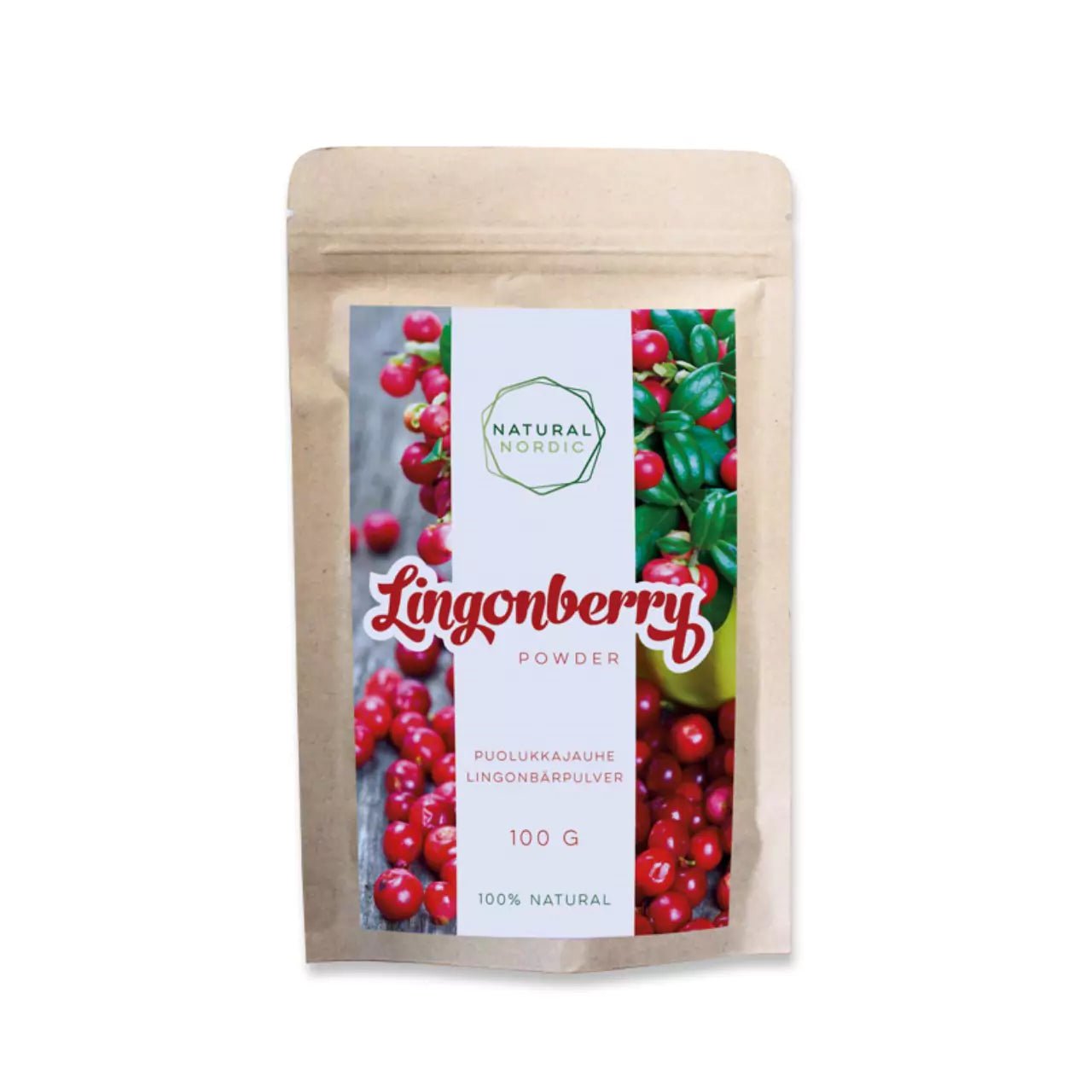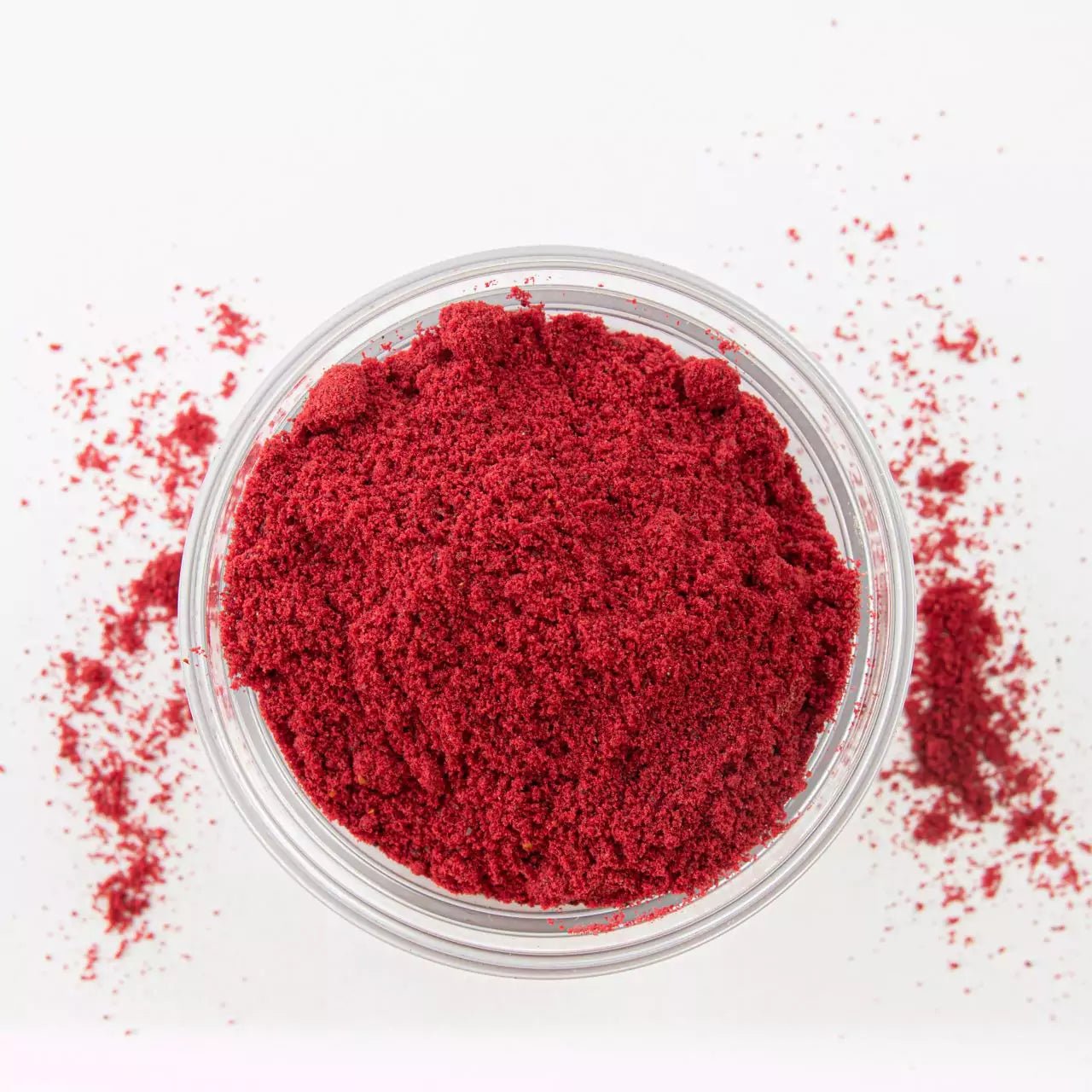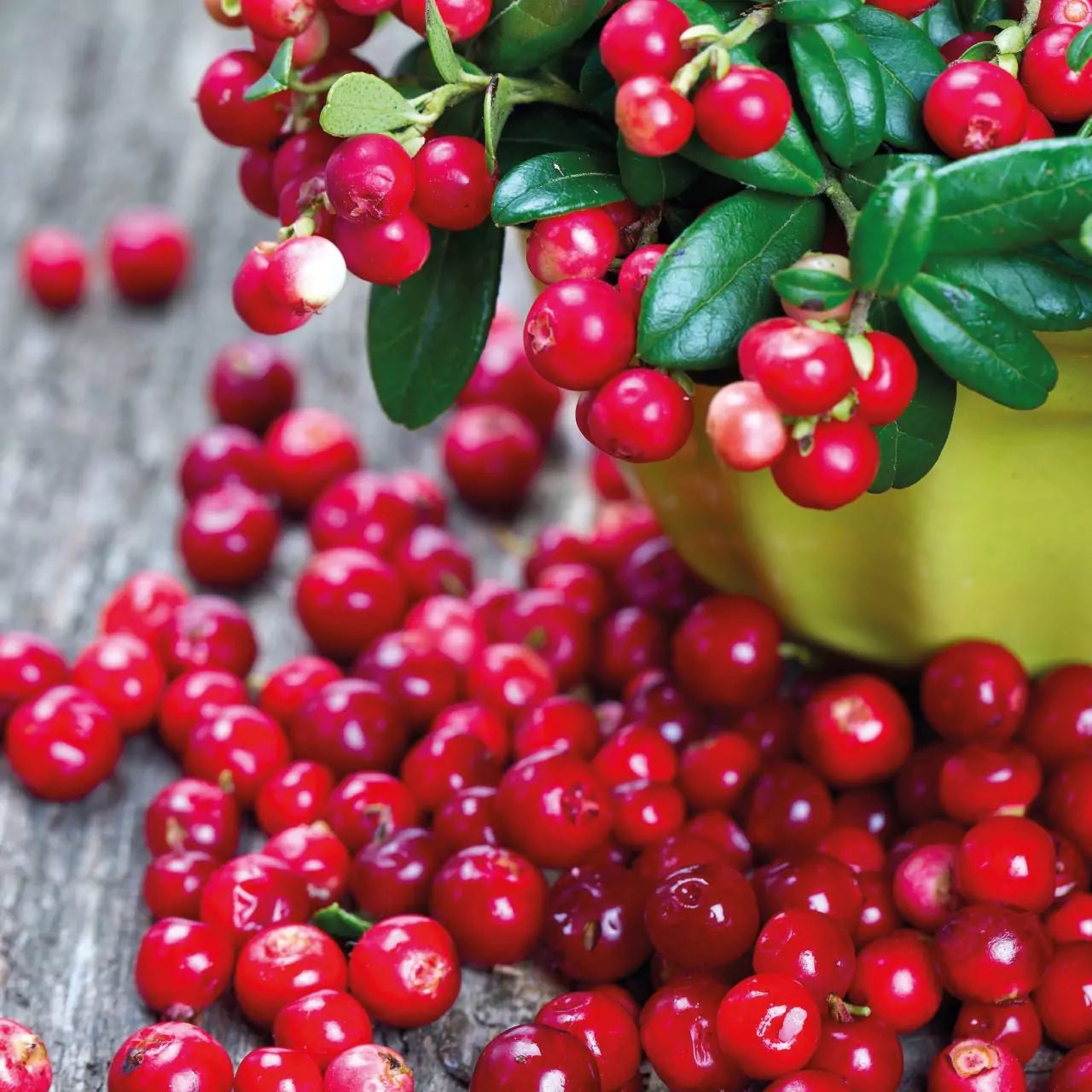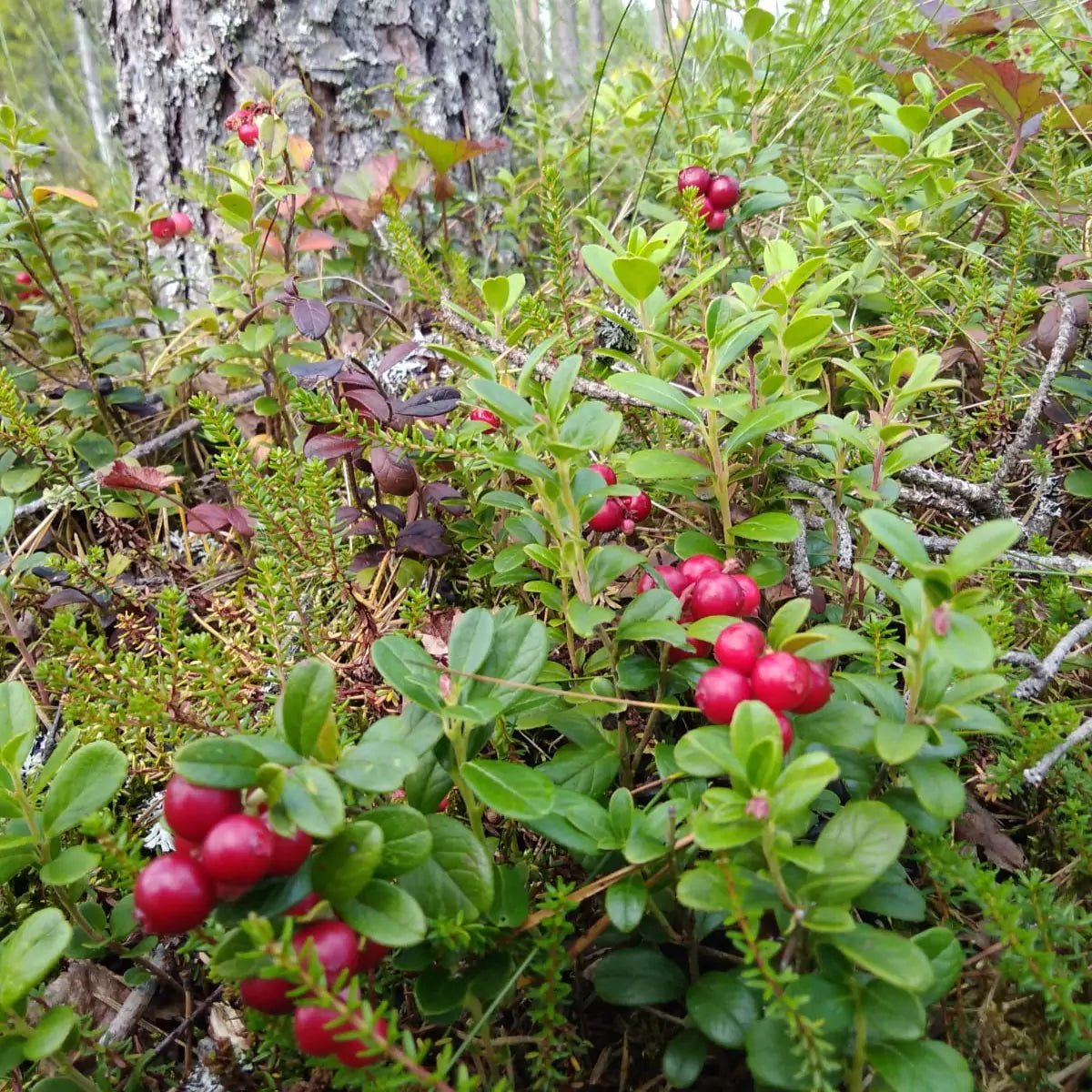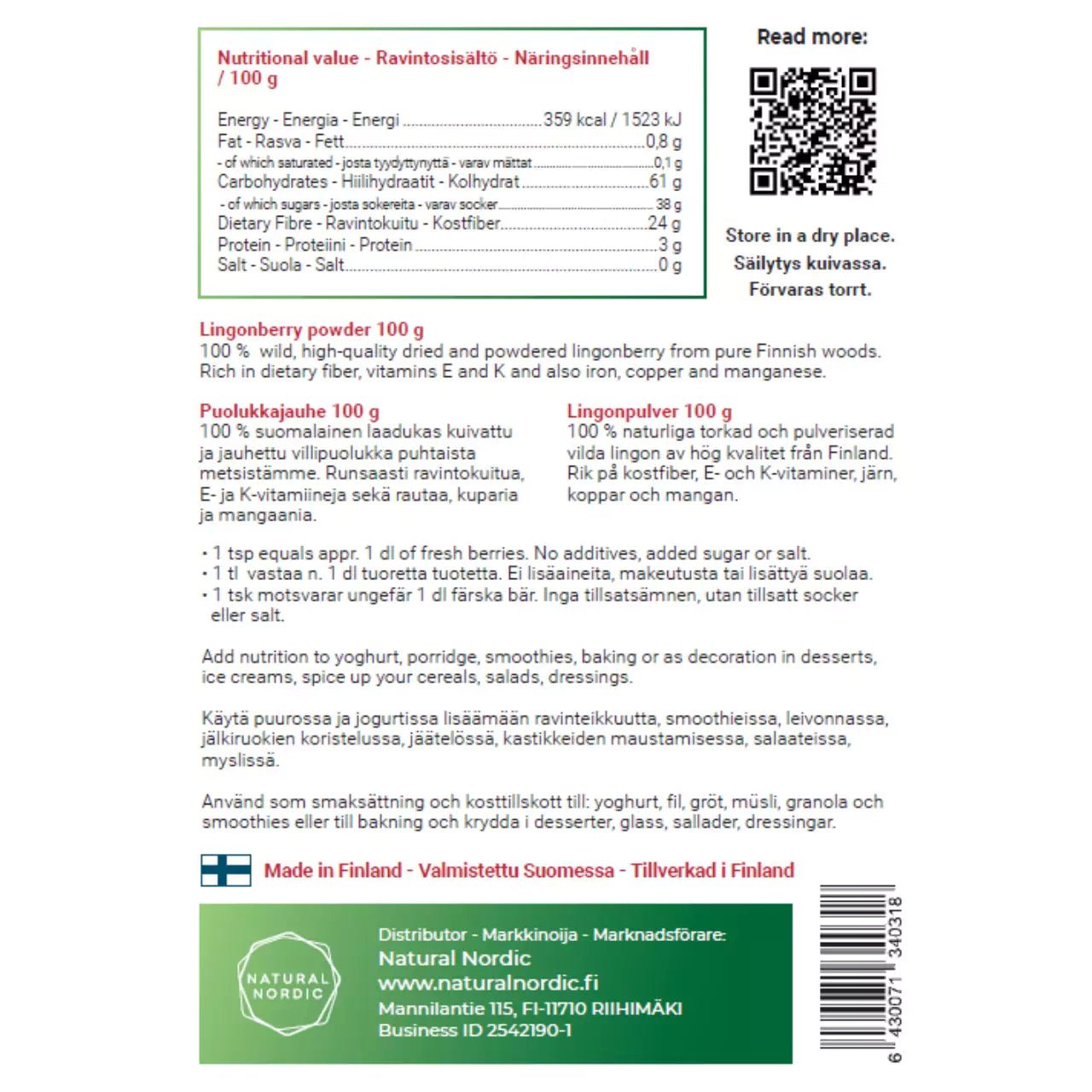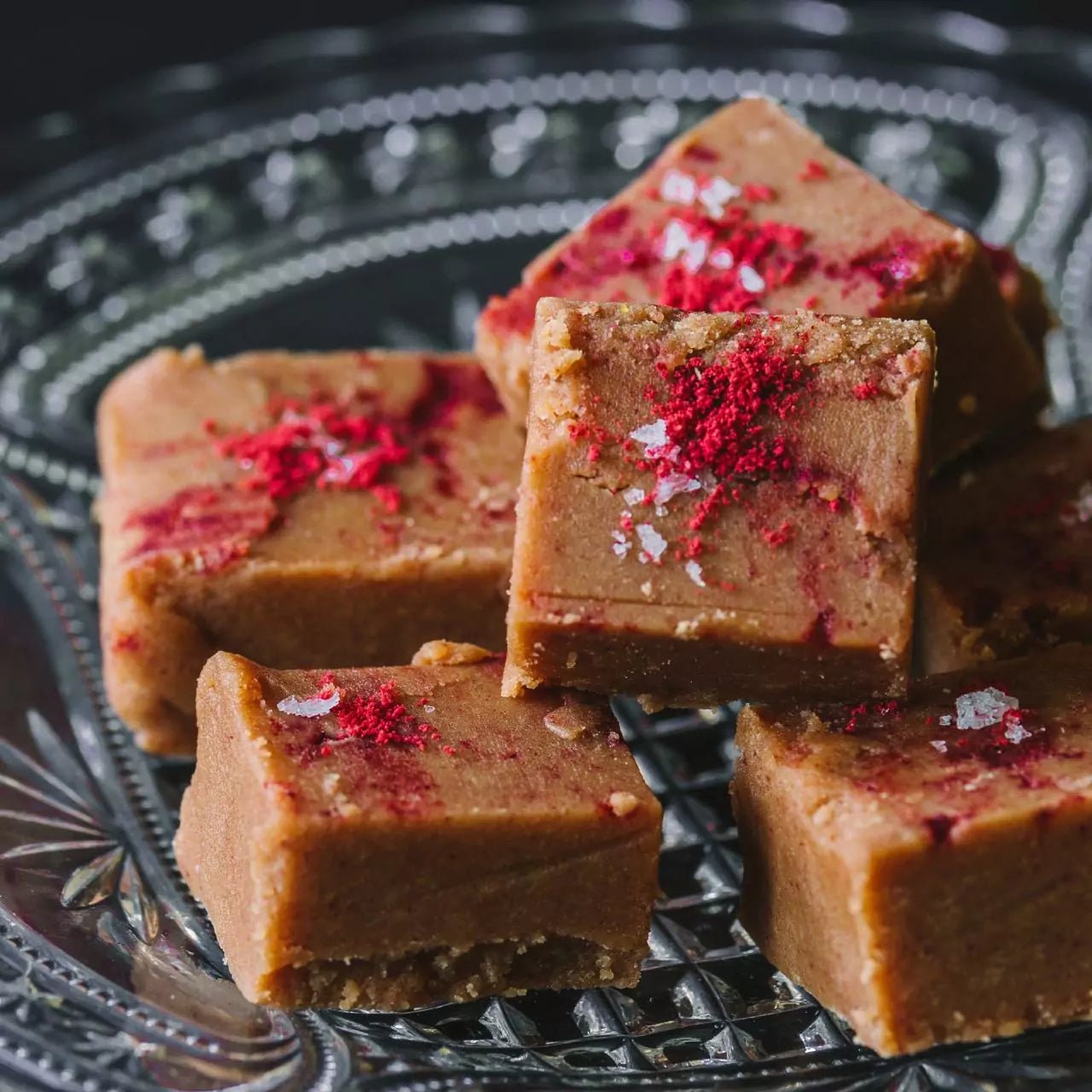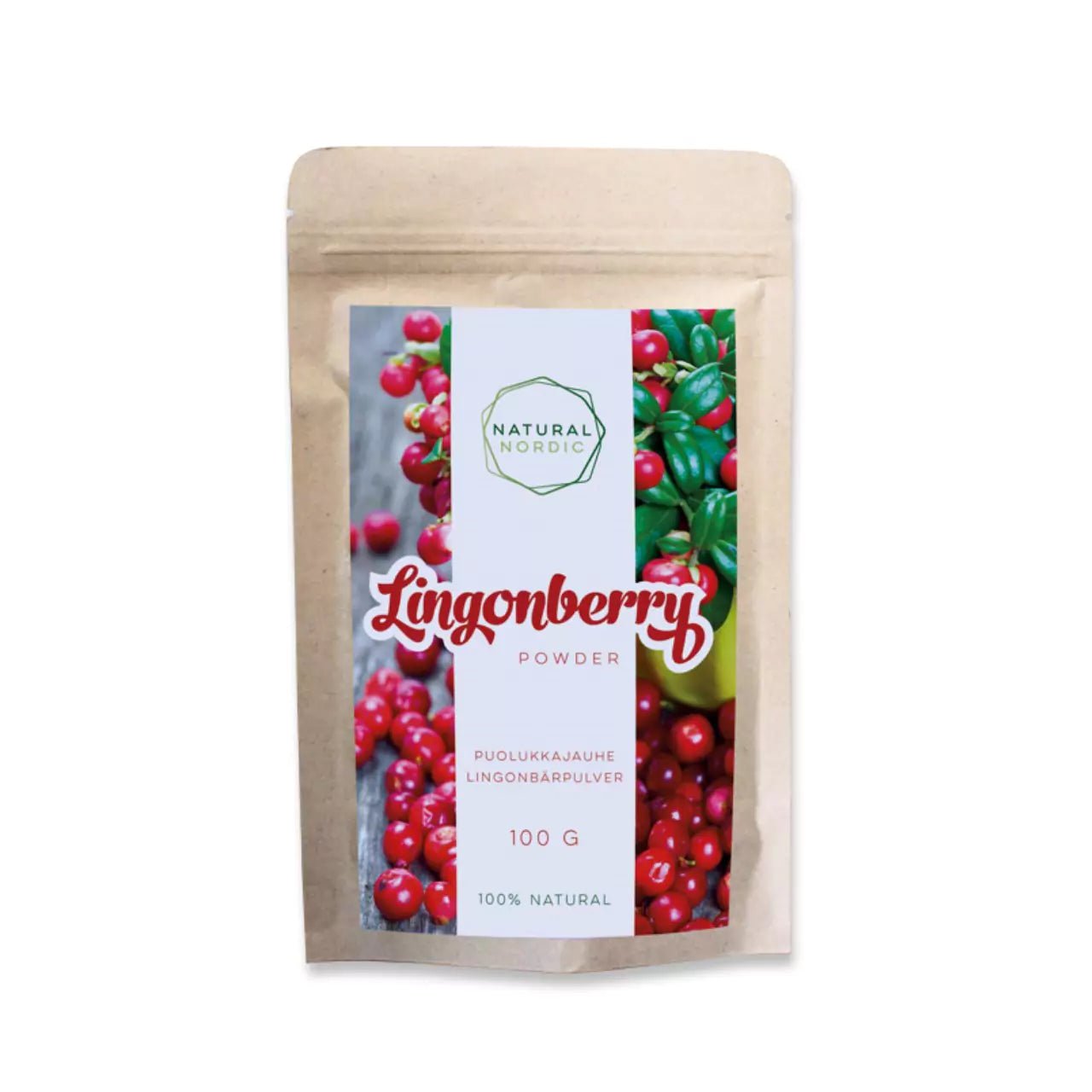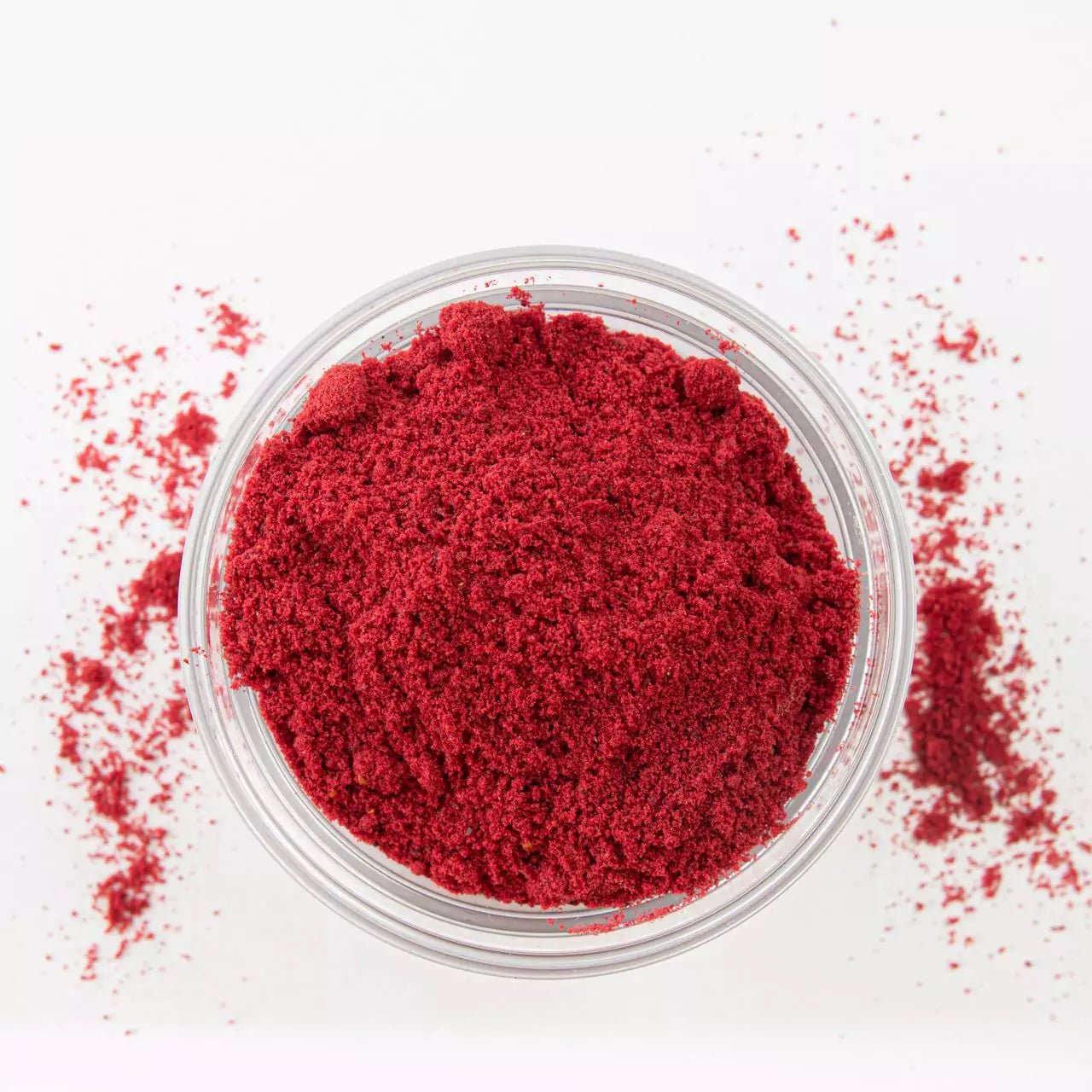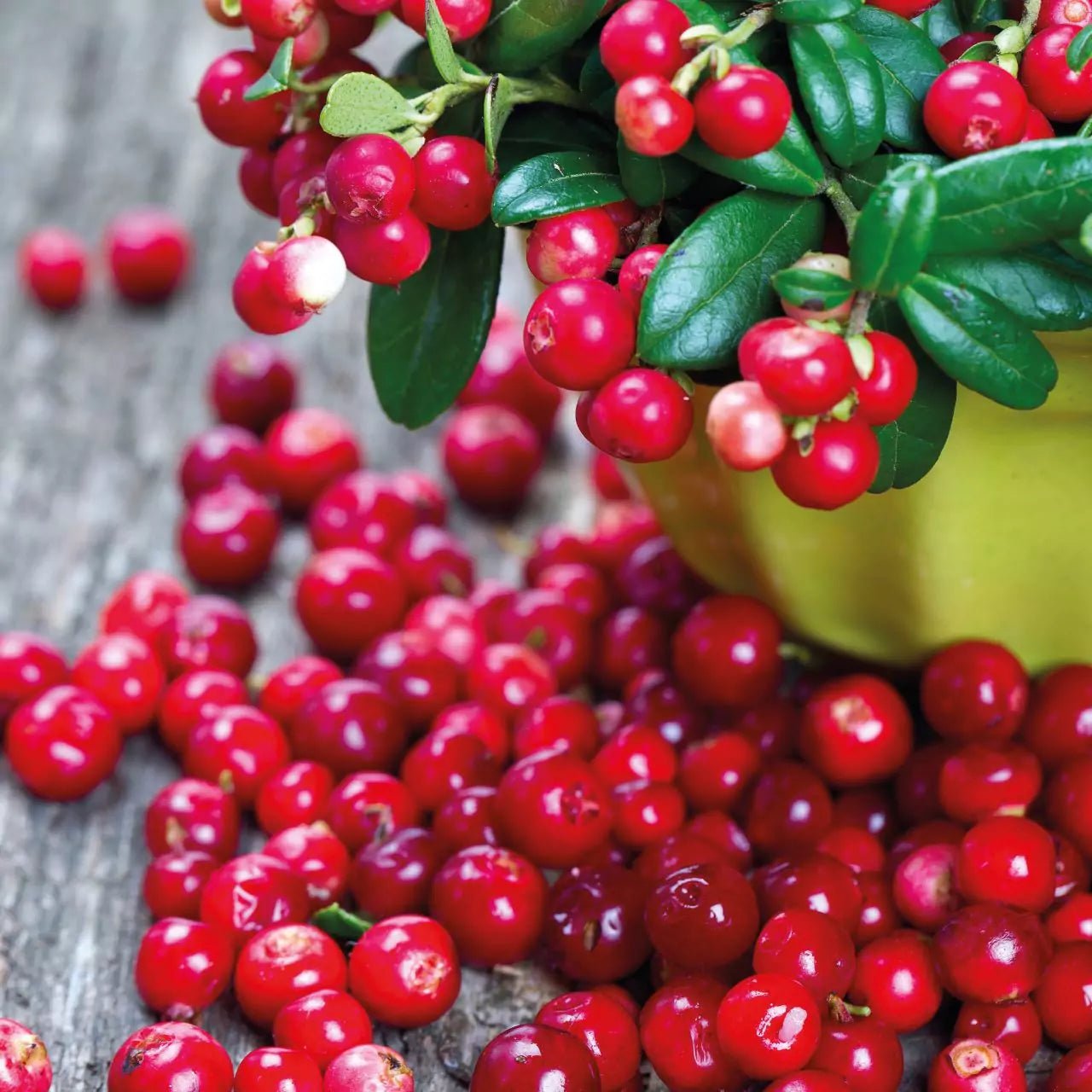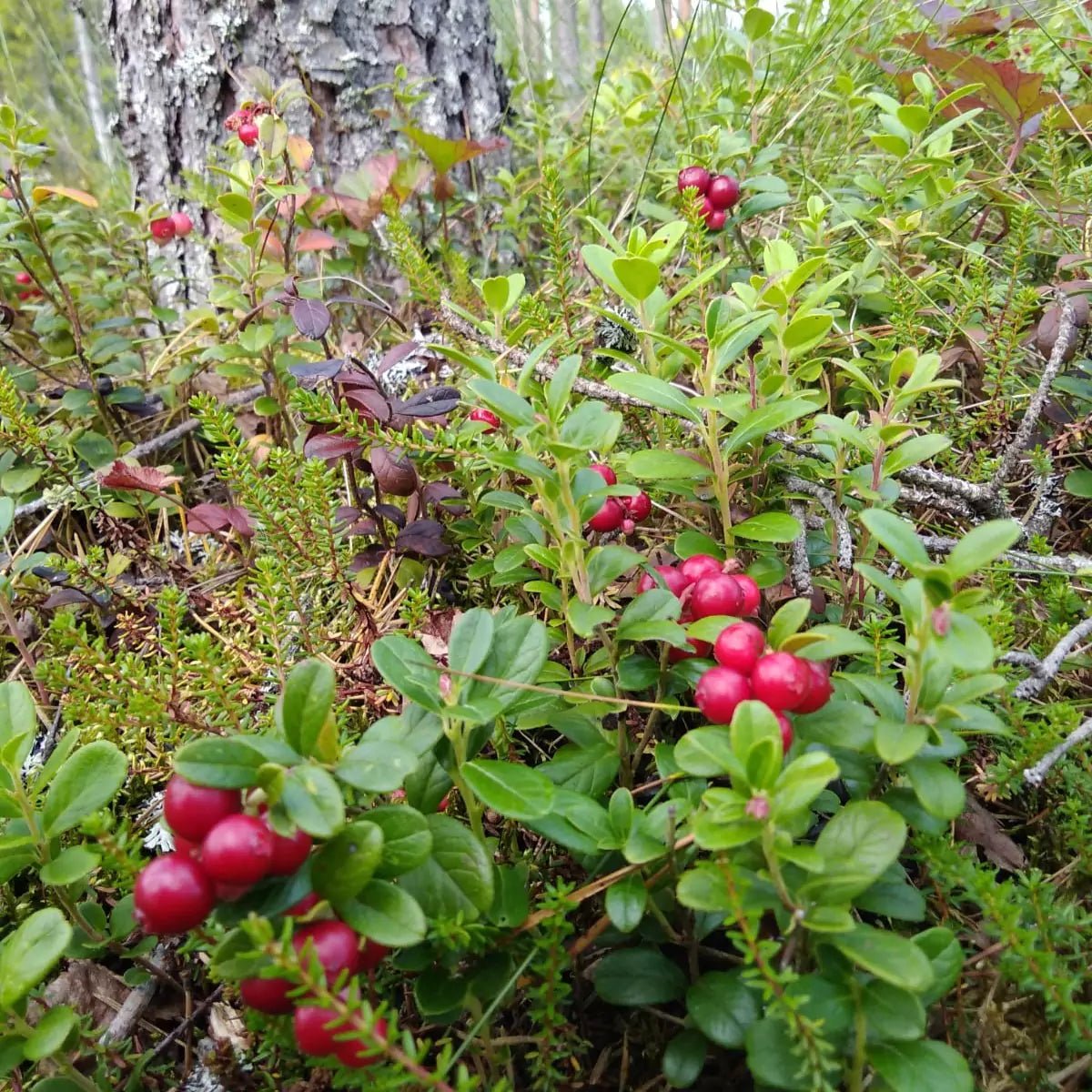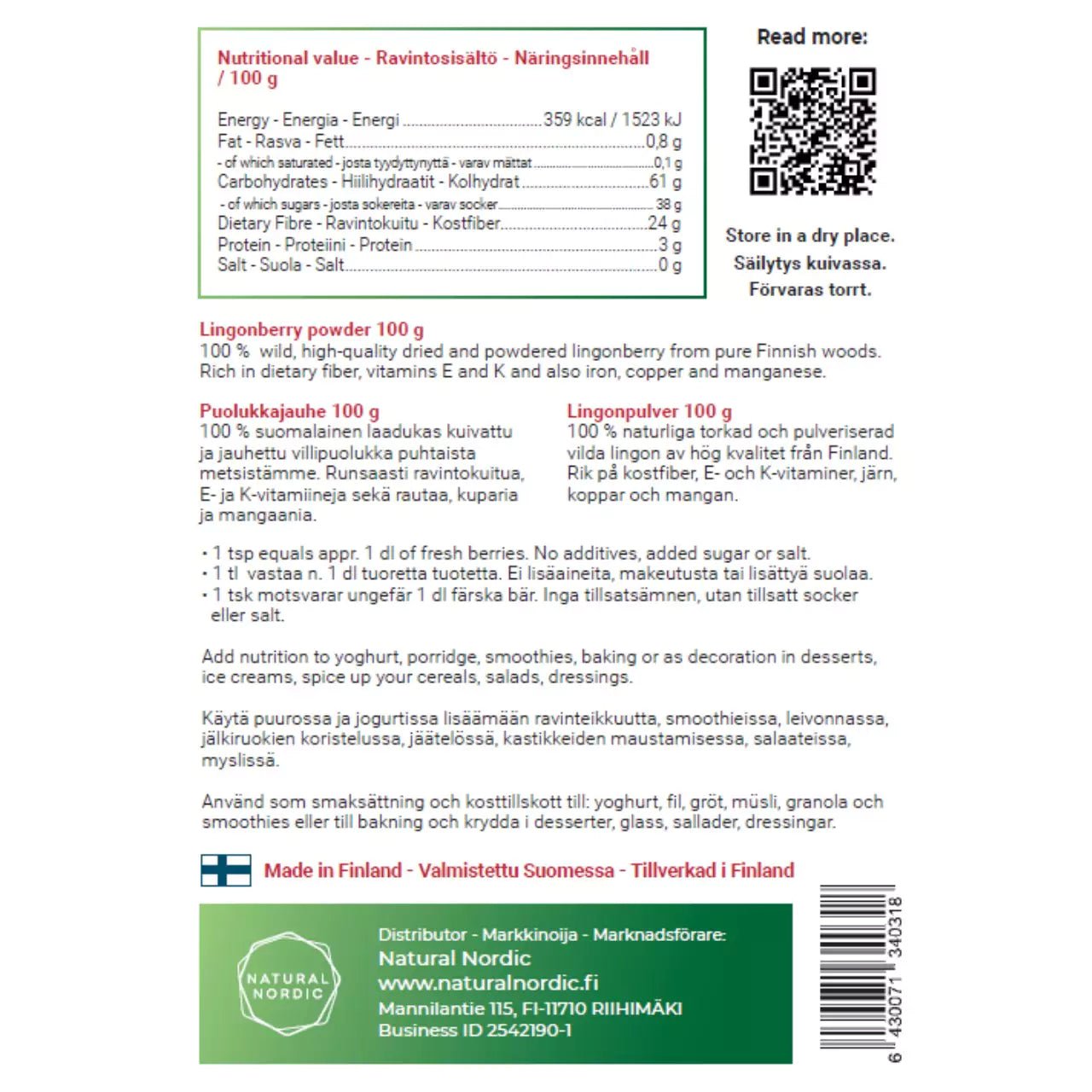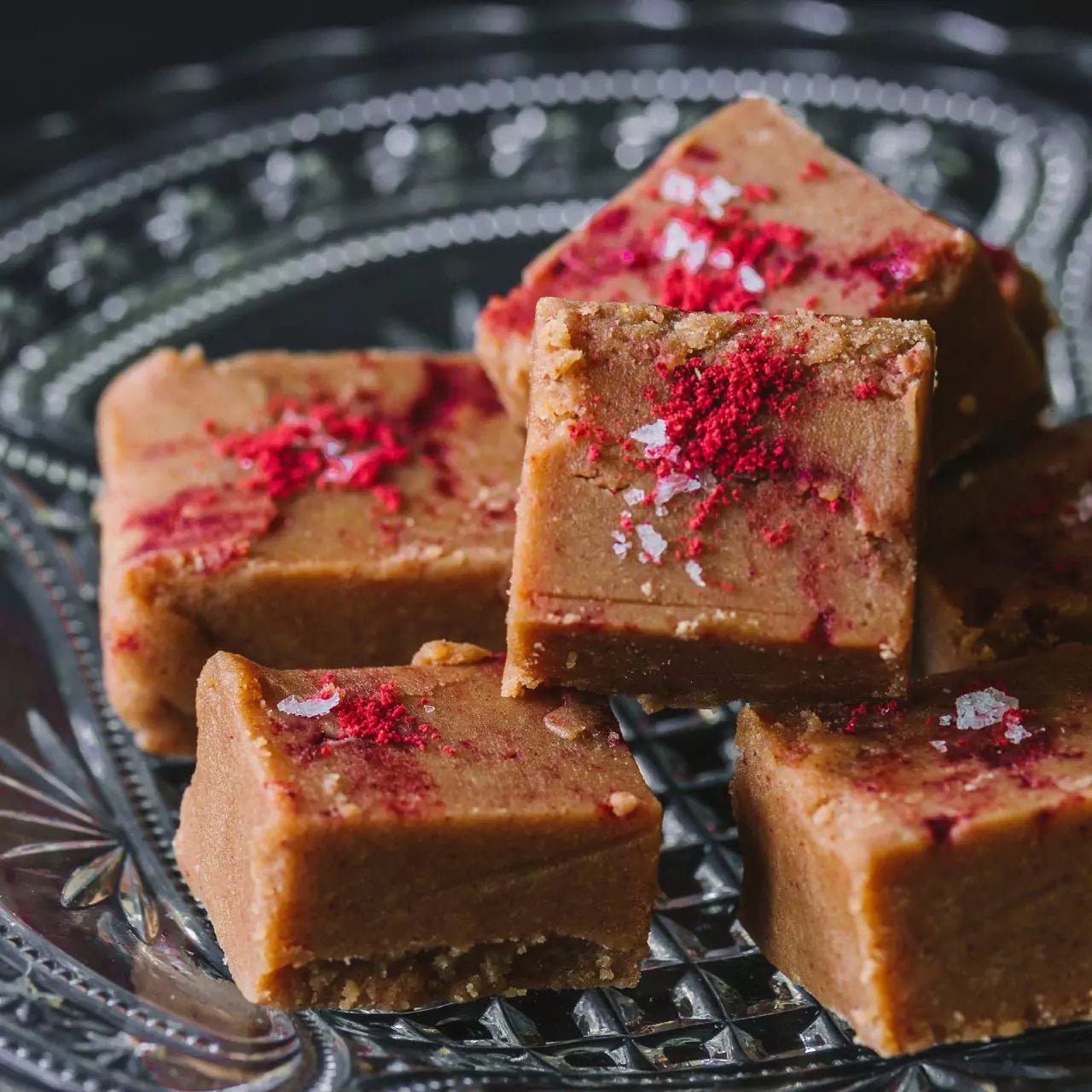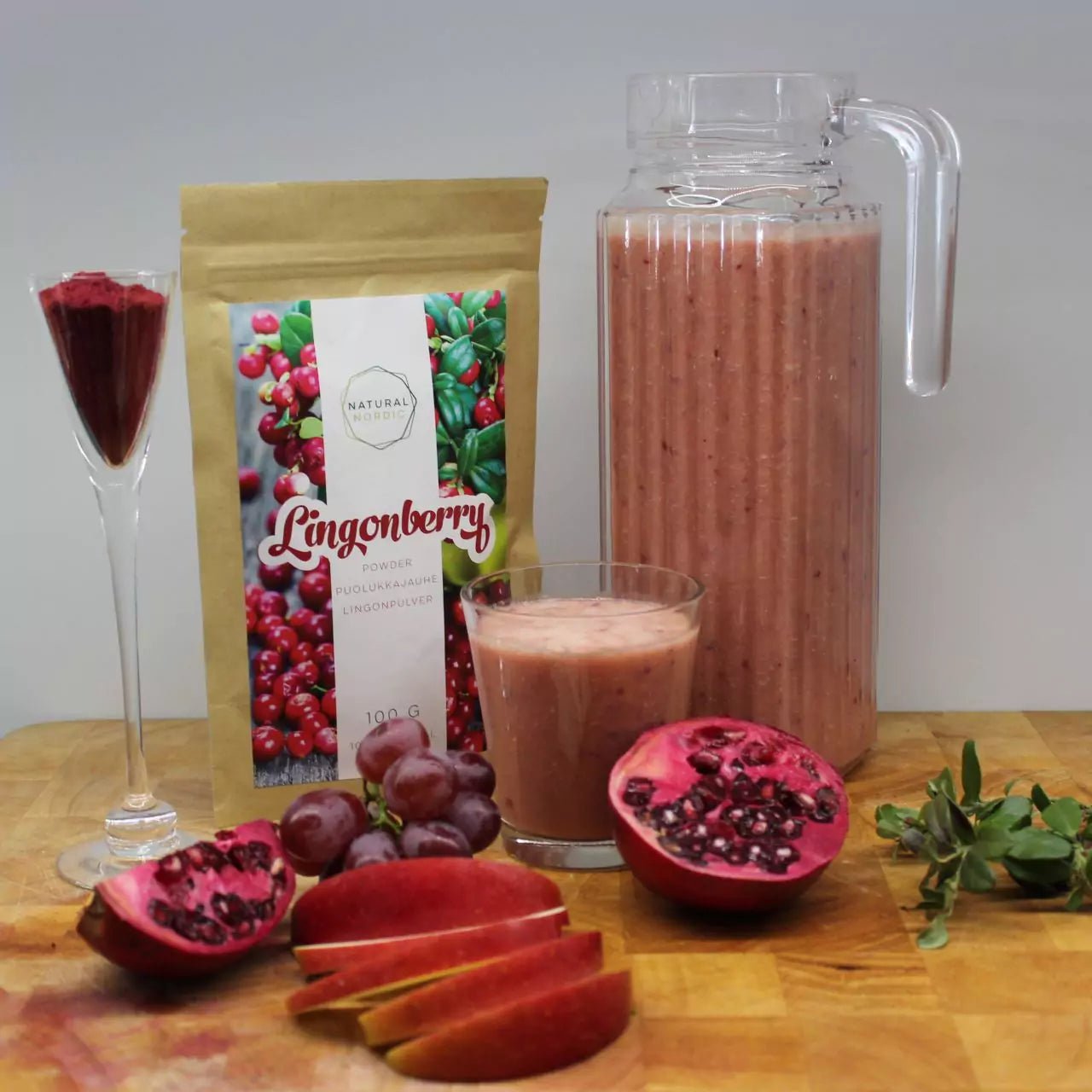LINGONBERRY POWDER
LINGONBERRY POWDER
Couldn't load pickup availability
Secure checkout with

Lingonberry (Vaccinium vitis-idaea)
Lingonberry, which also goes by the name of mountain cranberry, is as modest but efficient as a Nordic berry can be. The joyful little red pill grows in mats over green moss and under tall and dark pine trees. It has a refreshing tang in its taste and with its great qualities, lingonberry endures the stark autumnal weather.
Add nutrition to yogurt, oatmeal, smoothies, baking or as decoration in desserts, ice creams, spice up your cereals, salads, dressings with our powerful berry powders.
Lingonberries are rich in vitamin E and manganese. They are a good source of dietary fiber. Lingonberry's antioxidants - different polyphenols such as lignans, proanthocyanidins, stilbenes, resveratrol and quercetin, - are being researched intensively. The amount of resveratrol in lingonberries is similar to that found in the key ingredient of red wine, dark grapes.
RECIPES
Embark on a culinary adventure with Natural Nordic. Discover enticing recipes using our berry powders, inviting you to elevate your well-being through healthy and delicious creations. To check recipes using lingonberry powder, click here.
|
Nutritional values |
per 100g |
RI % * |
| Energy | 311 kcal/ 1302 kJ | |
| Fat | 0.8g | |
| - of which saturated | 0.1g | |
| Carbohydrates | 61g | |
| - of which sugars | 38g | |
| Dietary fiber | 24g | |
| Protein | 3g | |
| Salt | 0g | |
| Vitamin E | 3.8mg | 3% |
| Copper | 0.41mg | 4% |
| Manganese | 15mg | 75% |
*) RI % = Daily Reference Intake (adult) per 10g portion %
Source: Fineli, the National Food Composition Database in Finland and producers.
